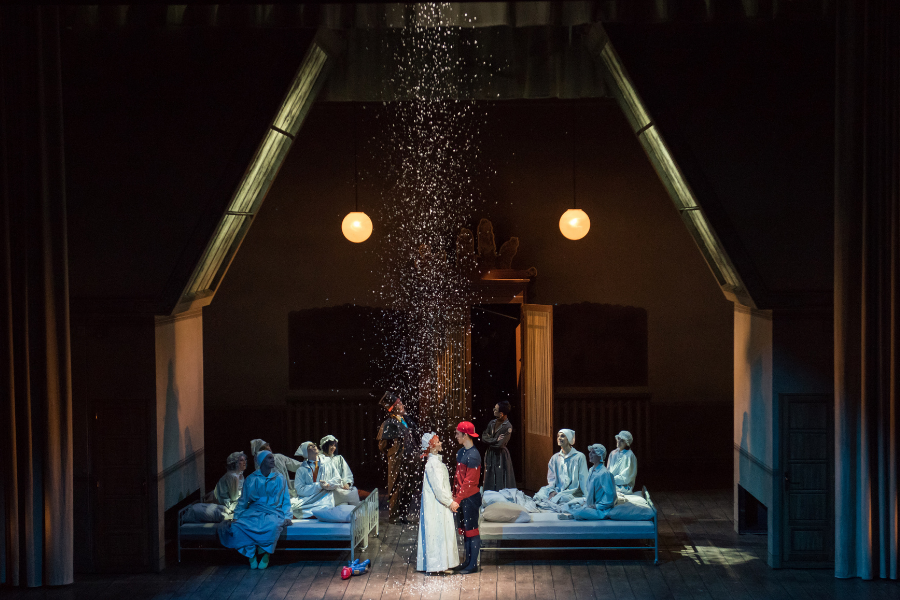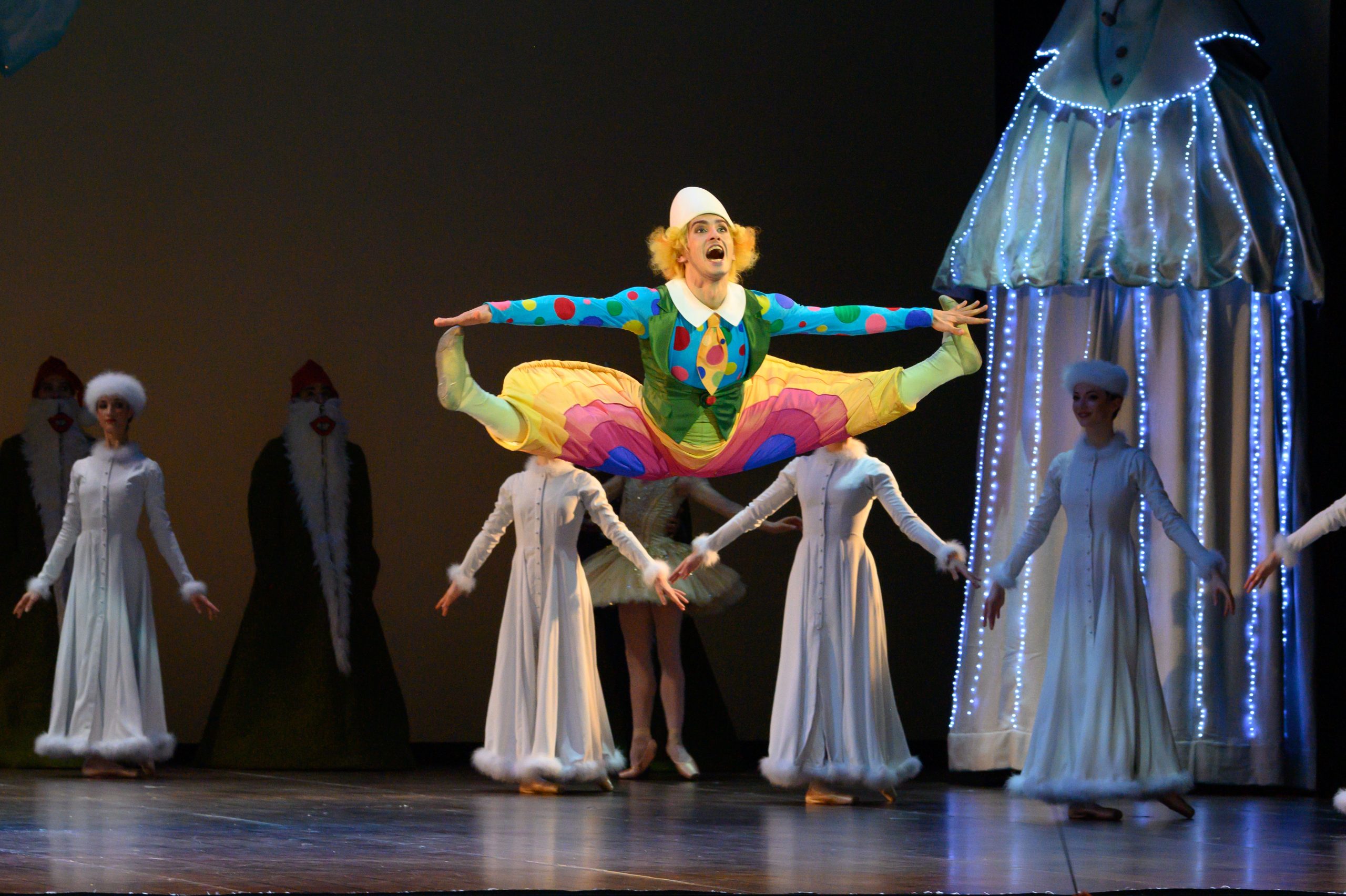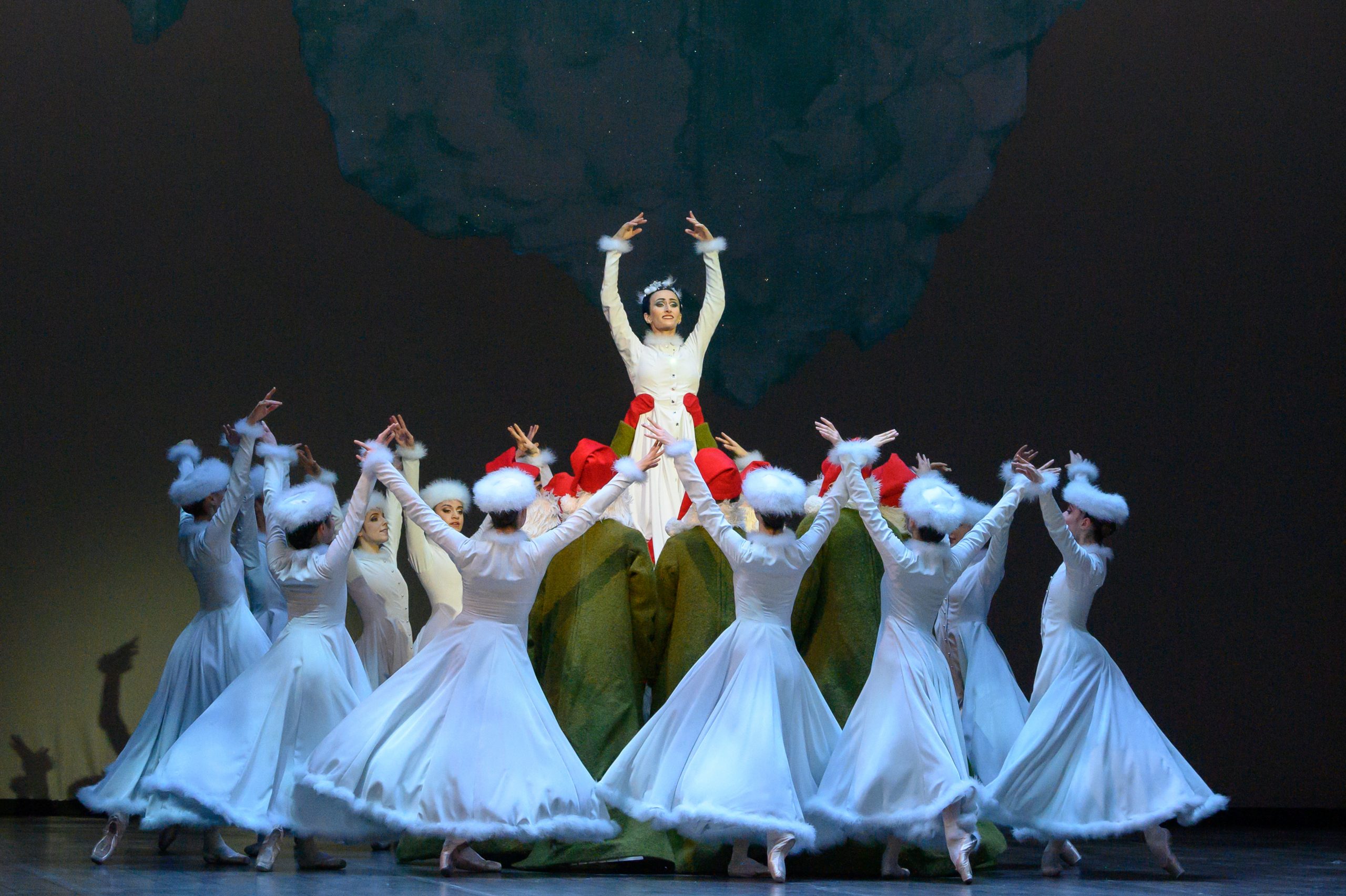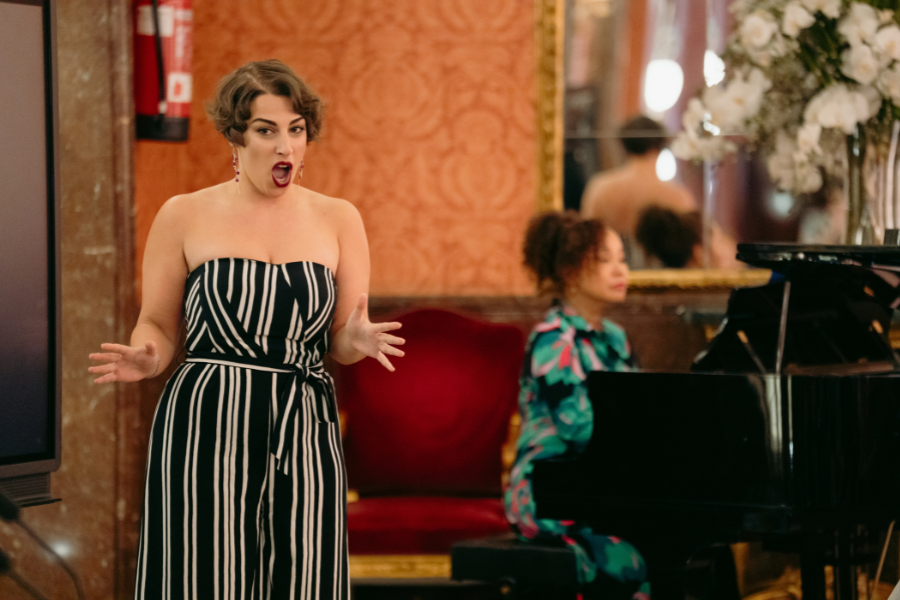“El cascanueces” de Tchaikovsky, un clásico de Navidad, llega al Liceu con la versión de Kader Belarbi y el ballet del Théâtre du Capitole de Toulouse

El cascanueces es la historia de una obra incontestable del ballet clásico. A partir de la versión inicial creada por Màrius Petipa en San Petersburgo en 1892, muchos coreógrafos han abordado el tema creando versiones más modernas e iconoclastas.
El director Kader Belarbi deja vía libre a su imaginación para darle un impulso de vitalidad a la versión tradicional. Conservando la magia de la historia navideña y retratando el paraíso de los niños y sus sueños, su propuesta está inspirada en los filmes de Méliès.
El Coro y la Orquesta del Gran Teatre del Liceu, bajo la dirección de Marius Stieghorst, darán vida a una de las partituras más famosas del compositor Pyotr Ilyich Chaikovski llena de energía y de una formidable frescura melódica.
El tema inmortal del amor, la lucha de fuerzas entre el mal y la belleza, los decorados mágicos, los suntuosos trajes y una indiscutible variedad de danzas convierten a este ballet en un espectáculo ineludible y una invitación a evadirse del mundo real y dejarse llevar por los sueños.
El Cascanueces se podrá ver del 28 de diciembre al 4 de enero en el Gran Teatre del Liceu en seis funciones.
Uno de los títulos clásicos de la Navidad, El Cascanueces de Pyotr Ilyich Chaikovski, se apodera del Gran Teatre del Liceu con el Ballet del Théâtre du Capitole de Toulouse del 28 de diciembre al 4 de enero, en un total de 6 funciones. Verdadero símbolo musical y una de las partituras más populares del compositor, muchos de sus números son himnos para la posteridad: el “Vals de las flores”, el “Trepak”, “Hada de azúcar”, entre otros. Dirigidos por el maestro Marius Stieghorst, el Coro y la Orquesta del Gran Teatre del Liceu serán los encargados de dar vida a una partitura llena de energía y formidable frescura melódica.
Estrenado el 18 de diciembre de 1892 en el Mariinski Theatre de San Petersburgo, El cascanueces es el tercer gran ballet que surgió de la fructífera relación entre Pyotr Ilyich Chaikovski y Màrius Petipà, junto con su eterno colaborador Lev Ivanov. Los dos anteriores habían firmado previamente El lago de los cisnes y La bella durmiente. Inspirado en un cuento de Ernst Theodor Amadeus Hoffmann (1816), Petipà, autor del libreto, se basó en la traducción libre que había escrito Alexandre Dumas para crear una fábula con un gran espectáculo festivo, lleno de prodigios, fantasía y amor. Desde entonces El cascanueces ha vivido numerosas versiones. Algunas de las más conocidas son las de John Cranko (1967), muy popular también hoy en día, y la de Rudolf Nuréiev, estrenada en Estocolmo en 1968, donde Drosselmeyer se convierte en protagonista en el doble papel de padrino y príncipe, y es ésta la versión que se ha popularizado posteriormente.
Ahora en el Liceu llega la propuesta de Kader Belarbi, considerado uno de los máximos representantes de la llamada “generación Nuréiev”. Bailarín estrella del ballet de la ópera de París hasta 2008, institución en la que también se formó, Belarbi es el heredero, y ha hecho gala de ello, de la forma de entender la danza de Rudolf Nuréiev, tanto técnicamente como artísticamente. No es de extrañar, pues, que sus espectáculos busquen la espectacularidad y la grandeza que el mítico bailarín aportó a la compañía de la capital francesa mientras fue su director (1983-1989).
Cuando en 2012 Kader Belarbi toma la dirección del ballet del Théâtre du Capitole de Toulouse, ya es un conocido coreógrafo internacional. En estos casi diez años, el director y coreógrafo ha nutrido a la compañía de un diálogo constante entre artes, épocas y estilos diferentes. La danza clásica no está reñida con la contemporánea, ni esta con la neoclásica, en una apuesta por eliminar etiquetas estancas. Así, entre el repertorio del ballet del Théâtre du Capitole, podemos encontrar grandes obras del repertorio clásico, con la exigencia que impone el respeto por la tradición, pero también revisitas más personales y obras de nueva creación.
Entre estas revisitas se enmarca El cascanueces de Belarbi. En la Navidad de 2017, el coreógrafo creó una nueva producción de este ballet como una declaración de intenciones contundente del poder, la belleza y la relevancia del ballet clásico. Cogiendo el cuento original de Hoffmann, más oscuro y psicológico, Belarbi convierte a Drosselmeyer en un doble personaje, como hizo Nuréiev. Pero si en ese caso el protagonista era un padrino y príncipe, en la de Belarbi se convierte en el director de un internado, un mago que crea y destruye mundos reales e imaginarios. Aunque la historia se transforma un poco, el espíritu de El cascanueces se mantiene intacto.
El primer acto se produce en un mundo cerrado, el de un internado que nos hace pensar en las películas de los años cuarenta y cincuenta, un espacio oscuro en tonos grises, un mundo en blanco y negro lleno de prohibiciones, que niega la individualidad, la diversión y la espontaneidad. En este Cascanueces, la noche antes de Navidad algunos niños abandonan el internado con sus padres, mientras que los huérfanos se consuelan con los regalos que les ofrece Drosselmeyer. Entre los juguetes entregados, nuestra heroína, Marie, recibe un cascanueces en forma de soldadito de plomo. Como en la versión original, los juguetes cobrarán vida y vivirán sus vidas. Los propios niños se volverán juguetes animados. Los regalos de Navidad son la ocasión para que los niños abran las puertas de los sueños y abandonen la tristeza de la cotidianidad sumergiéndose en un mundo onírico donde los juguetes reviven y los ayudan a enfrentarse a los miedos nocturnos y a las prohibiciones, a experimentar nuevas emociones y a compartir pruebas de valor en un mundo maravilloso.
En este viaje hacia lo onírico, Belarbi coge a tres compañeros de aventura: Antoine Fontaine para los decorados, Philippe Guillotel para el vestuario y Hervé Gary para el diseño de iluminación. Los tres han creado un mundo fantástico, de estética muy francesa, entre el cabaret y el circo, que ya forman parte de su lenguaje. Pero también se inspiran en el imaginario de su propia niñez: Marie es una niña con el pelo pelirrojo y el aspecto y carácter de Pippi Calzaslargas que crea el Club de los Cinco, que recuerda a las novelas de aventuras juveniles de Enid Blyton, y los ratones originales son aquí arañas en una transformación inspirada en la araña Aragog de Harry Potter. Otras transgresiones son la conversión de los bailarines españoles en ranas, los enormes vestidos hinchados estilo Michelin de la danza árabe, los nueve bailarines que conforman una oruga masiva, la fábrica soviética…
Todo sucede en un universo colorido, un bosque encantado con plantas fantásticas que, de hecho, son cajas que se abren como en un cuento desplegable para cada baile: la danza española, la árabe, la china, la rusa… Después de vivir mil y una aventuras, Marie y sus cinco amigos llegarán al Reino de las Nieves, habitado por Papá Noel y la Reina de los Copos de Nieve, que tendrá la bondad de restituirle al cascanueces el brazo que la malvada reina de las arañas le había arrancado en el primer acto.
En realidad, o en el mundo de los sueños, todos estos viajes fantásticos del segundo acto son una búsqueda por encontrar el brazo que le falta. Y es también durante estas peregrinaciones cuando Marie madura y se convierte en una mujer que se enamora. Todo este mundo simbólico llega a su punto culminante con la metamorfosis del cascanueces y de Marie en príncipe y princesa, momento en que Belarbi vuelve al academicismo más puro en el gran paso a dos final que recoge la tradición más pura del ballet clásico.
El tema inmortal del amor, la lucha de fuerzas entre el mal y la belleza, los decorados mágicos, los suntuosos trajes y una indiscutible variedad de danzas convierten a este ballet en un espectáculo ineludible y una invitación a evadirse del mundo real y dejarse llevar por los sueños.
Kader Belarbi
Después de formarse en la École de danse de l’Opéra de Paris, en 1980 ingresó en el ballet principal. En 1989 consiguió la atención del sector al convertirse en el bailarín principal en el ballet La bella durmiente, con coreografía de Rudolf Nuréiev. Diecinueve años después, se despidió del Ballet de la ópera de París con Signes de Carolyn Carlson. Abierto a todos los estilos, ha interpretado ballets del repertorio de la ópera de París, así como danza contemporánea. Desde el año 2012 es el director de danza del Théâtre du Capitole. Como coreógrafo ha firmado más de cuarenta ballets.
Ballet del Théâtre du Capitole
El actual proyecto artístico del ballet, dirigido por Kader Belarbi, es dotar al ballet de un amplio repertorio clásico y abrir la compañía mediante la diversificación de sus repertorios, pero también promover la expansión de su público, su inclusión en la región y su influencia internacional. Tradición y modernidad resumen la vocación del Ballet du Capitole. Con 35 bailarines de 12 nacionalidades diferentes, ofrece, temporada tras temporada, el reflejo de un ballet vivo, en sintonía con los tiempos, abierto a todo el mundo.
Recientemente, el Théâtre du Capitole, ha recibido un sello nacional del Ministerio de Cultura del Gobierno francés, por lo que ha sido designado ‘Opéra Nacional’.
Marius Stighorst
Actualmente es el director de la Orchestre Symphonique de Orléans, cargo que ocupa desde el año 2014. Además, en 2019 fue nombrado profesor en la Staatliche Hochschule für Musik de Friburgo (Alemania). Entre los años 2009 y 2019 fue director asistente de la Opéra National de Paris, entre otras. Estudió piano y composición en Karlsruhe, posteriormente obtuvo las becas de la fundación Studienstiftung des Deutschen Volkes y de la Asociación Wagner de Bayreuth. Entre los años 2001 y 2004 fue el segundo Kapellmeister de Graz.
Cambios en el aforo
A partir de El Cascanueces, el Gran Teatre del Liceu reduce su aforo a un 70%, aplicando las nuevas medidas sanitarias anunciadas recientemente por el Gobierno de la Gealitat de Catalunya.
Para cumplir con el límite establecido, se ha cerrado la venta de las funciones de El Cascanueces (excepto los días 30 de diciembre y 3 enero) y del recital de Javier Camarena porque ya cuentan con un aforo completo. En el caso de aquellas funciones que sobrepasan el 70%, el Liceu cancela las reservas pendientes de confirmación para priorizar al público que ha comprado entrada. En estos días concretos que la ocupación actual supera el nuevo límite permitido, también se realizarán ajustes para mantener el aforo al 70%. El Liceu está estudiando la posibilidad de ofrecer a aquellos espectadores con localidades de poca visibilidad un cambio de día con localidades de mayor visibilidad.
Todos aquellos espectadores que no puedan asistir a alguna función por motivos relacionados con la pandemia, el Liceu pone a disposición un cheque regalo que podrá canjearse por cualquier espectáculo programado por el Gran Teatre del Liceu con localidades disponibles.







